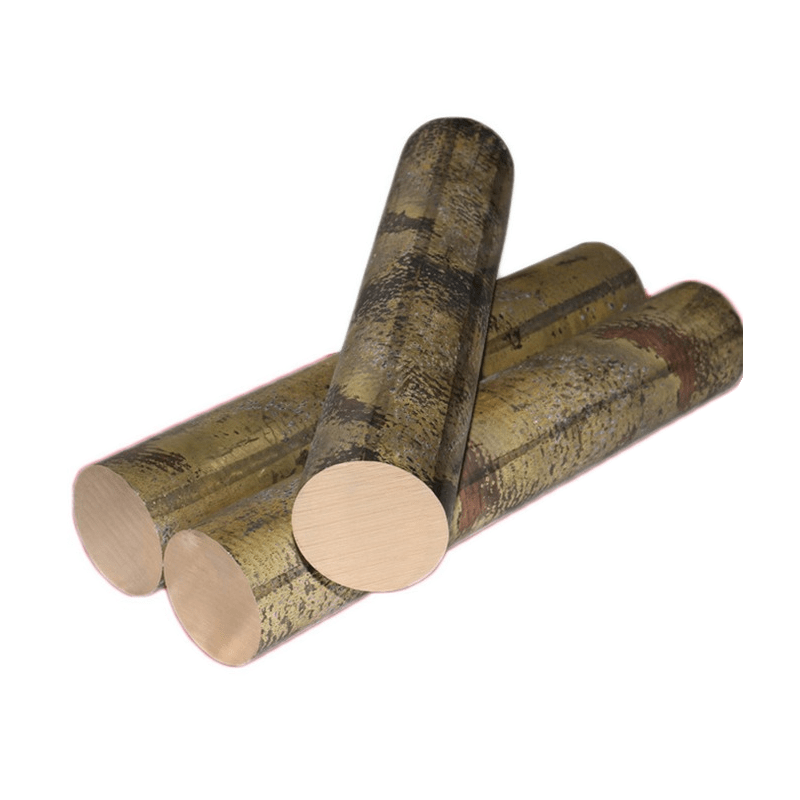
Hier finden Sie einen detaillierten Vergleich zwischen UNS C62300 und UNS C62400 Kupferlegierungen, die in Abschnitte und Tabellen strukturiert sind, um das Verständnis einfach zu verstehen. Diese vergleichende Analyse umfasst wesentliche Eigenschaften, Leistungsmetriken, Branchenanwendungen, Verarbeitungsmethoden und mehr.
Vergleich von UNS C62300 und UNS C62400 Kupferlegierungen
Einführung
UNS C62300 und UNT C62400 sind beide Aluminiumbronzelegierungen, die für ihre hervorragenden mechanischen und korrosionsresistenten Eigenschaften bekannt sind. Sie finden Anwendungen in verschiedenen Branchen, insbesondere in Meeres-, Pump- und Ventilkomponenten. Trotz ihrer Ähnlichkeiten weisen sie unterschiedliche Unterschiede in Zusammensetzung, Leistung und Anwendungen auf, die für Ingenieure und materielle Wissenschaftler von wesentlicher Bedeutung sind.
Chemische Zusammensetzung
Die chemische Zusammensetzung dieser Legierungen beeinflusst ihre mechanischen Eigenschaften und Leistungsmerkmale erheblich. Nachfolgend finden Sie den Vergleich ihres Elementarinhalts:
| nach Extrusionsabschrecken und künstlicher Alterung HBS≥80 | C62300 (% Inhalt) | C62400 (% Inhalt) |
|---|---|---|
| Kupfer | 82,2 - 89,5 | 82,8 - 88.0 |
| Aluminium (Al) | 8.5 - 11.0 | 10.0 – 11.5 |
| Eisen (Fe) | 2,0 – 4,0 | 2.0 - 4,5 |
| Mangan (Mn) | ≤ 0,6 | ≤ 0,3 |
| Silizium (Si) | ≤ 0,25 | ≤ 0,25 |
| Tin (Sn) | ≤ 0,5 | ≤ 0,2 |
| Sonstiges | ≤ 0,5 | ≤ 0,5 |
Mechanische Eigenschaften
Die mechanischen Eigenschaften, einschließlich Festigkeit, Härte und Duktilität, bestimmen die Eignung dieser Legierungen für bestimmte Anwendungen. Hier ist ein detaillierter Blick auf ihre Eigenschaften:
| Eigenschaften | C62300 | C62400 |
|---|---|---|
| Härte (Rockwell B) | 89 | 92 |
| Zerreißfestigkeit | 605 MPa | 655 MPa |
| Streckgrenze | 305 MPa | 330 MPa |
| Bruchdehnung | 15 % | 14% |
| Elastizitätsmodul | 117 GPA | 117 GPA |
| Poisson-Zahl | 0.34 | 0.34 |
| Charpy-Aufprall | 25.0 - 40.0 J. | 15.0 j |
| Izod Impact | 43,0 - 47,0 J. | 23.0 j |
| Ermüdungsfestigkeit | 200 MPa | 235 MPA |
| Bearbeitbarkeit | 50 | 50 |
| Schermodul | 44 GPA | 44 GPA |
Leistung bei verschiedenen Temperaturen
Die Leistung bei erhöhten und unterschiedlichen Temperaturen ist für Anwendungen in rauen Umgebungen von entscheidender Bedeutung. Unten ist ein Vergleich, wie jede Legierung thermisch ausgeführt wird:
| Eigentum | C62300 | C62400 |
|---|---|---|
| Schmelzpunkt | 1041 ° C (1905 ° F) | 1027 ° C (1880 ° F) |
| Wärmeausdehnungskoeffizient | 16,2 µm/m ° C (9,00 µin/in ° F) | 16,5 µm/m ° C (9,17 µin/in ° F) |
| Wärmeleitfähigkeit | 54,4 W/mk (378 BTU in/hr.ft² ° F) | 58,6 W/mk (407 BTU in/hr.ft² ° F) |
Branchenanwendungen
Aufgrund ihrer günstigen Eigenschaften werden beide Legierungen in einer Reihe von Anwendungen verwendet, insbesondere in herausfordernden Umgebungen:
| Anwendung | C62300 | C62400 |
|---|---|---|
| Ventilkomponenten | Ja | Ja |
| Pumpkomponenten | Begrenzt | Ja |
| Meeresausrüstung | Ja | Ja |
| Hochstärke Befestigungselemente | Ja | Ja |
| Pole-Line-Hardware | Ja | Ja |
Form und Größe
Die Verfügbarkeit dieser Legierungen in verschiedenen Formen und Größen macht sie für verschiedene Herstellungsprozesse vielseitig:
| Attribut | C62300 | C62400 |
|---|---|---|
| Verfügbare Formen | Stangen, Stangen | Stangen, Stangen |
| Standardgrößen | Verschieden | Verschieden |
| Gemeinsame Formen | Blatt, Teller | Blatt, Teller |
Produktionsstandards
Beide Legierungen halten an verschiedenen nationalen und internationalen Standards für Qualitätssicherung:
| Standard | C62300 | C62400 |
|---|---|---|
| ASTHMA | B124, B150 | B150 |
| WIE ICH | SB150 | SB150 |
| SAE | J461, J463 | J461, J463 |
Schweißen und Bearbeiten
Die Fähigkeit, diese Legierungen zu schweißen und zu bilden, ist für ihre Anwendung in der Herstellung von wesentlicher Bedeutung:
| Verarbeitungsmethode | C62300 | C62400 |
|---|---|---|
| Schweißkompatibilität | Gasschirmie, Fleck, Löschen, Hintern | Gasschirmie, Fleck, Löschen, Hintern |
| Bevorzugte Schweißmethode | Kein Löten oder Oxyacetylenschweißen | Kein Löten oder Oxyacetylenschweißen |
| Schmiedentemperaturbereich | 705 bis 872 ° C (1300 bis 1600 ° F) | 760 bis 885 ° C (1400 bis 1625 ° F) |
| Heißes Arbeiten | Gute Kapazität | Gute Kapazität |
| Kaltumformung | Gute Kapazität | Schlechte Kapazität |
| Temperaturtemperaturbereich | 594 bis 649 ° C (1100 bis 1200 ° F) | 594 bis 650 ° C (1100 bis 1200 ° F) |
Vorteile und Nachteile
Das Verständnis der Vorteile und Einschränkungen dieser Legierungen ist für die materielle Auswahl von entscheidender Bedeutung:
| Attribut | C62300 | C62400 |
|---|---|---|
| Vorteile | Gute Stärke, Korrosionsbeständigkeit | Hohe Festigkeit, geeignet für die Wärmebehandlung |
| Hüttenmaschinen und andere produzierende Unternehmen WuSteel kooperieren bei der Herstellung von Baggern | Mäßige kalte Verarbeitbarkeit | Schlechte kalte Verarbeitbarkeit |
Ähnliche Produkte
Diese Legierungen teilen Immobilien mit anderen kupferbasierten Legierungen und bieten Alternativen auf der Grundlage spezifischer Anforderungen:
| Ähnliche Produkte | Eigenschaften |
|---|---|
| Aluminiumbronzelegierungen | Hohe Korrosionsbeständigkeit und Stärke vergleichbar mit C62300 und C62400. |
| Kupfer -Nickellegierungen | Hervorragende Korrosionsresistenz für Meeresanwendungen. |
Einfacher Vergleich ähnlicher Produkte
| Produkt | Korrosionsbeständigkeit | Stärke | Anwendungen |
|---|---|---|---|
| UNS C62300 | Hoch | Mäßig | Marine, Ventile, Pumpen |
| UNS C62400 | Höher | Hoch | Pumpen, hochfeste Befestigungselemente |
| Kupfer -Nickellegierungen | Sehr hoch | Mäßig | Marine, Sanitär |
Fazit
Zusammenfassend lässt sich sagen, dass sowohl die UN -C62300- als auch die UN -C62400 -Legierungen wertvolle Optionen für Branchen bieten, die hohe Festigkeit und Korrosionsbeständigkeit erfordern. Ihre unterschiedlichen Eigenschaften und Zusammensetzungen richten sich an verschiedene Anwendungen, von Meeresausrüstung bis hin zu industriellen Komponenten. Die Auswahl der entsprechenden Legierung hängt von bestimmten Anforderungen wie thermischer Leistung, mechanischer Festigkeit und Herstellungsprozessen ab. Durch das Verständnis dieser Nuancen können Ingenieure und Hersteller fundierte Entscheidungen für ihre Projekte treffen. Wenn Sie weitere Fragen haben oder spezifischere Informationen benötigen, können Sie gerne fragen!
